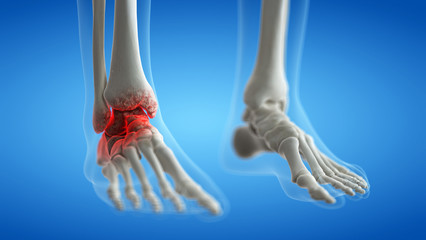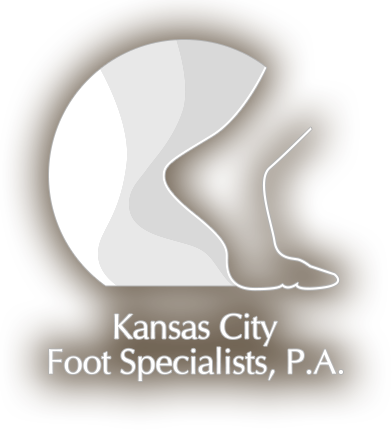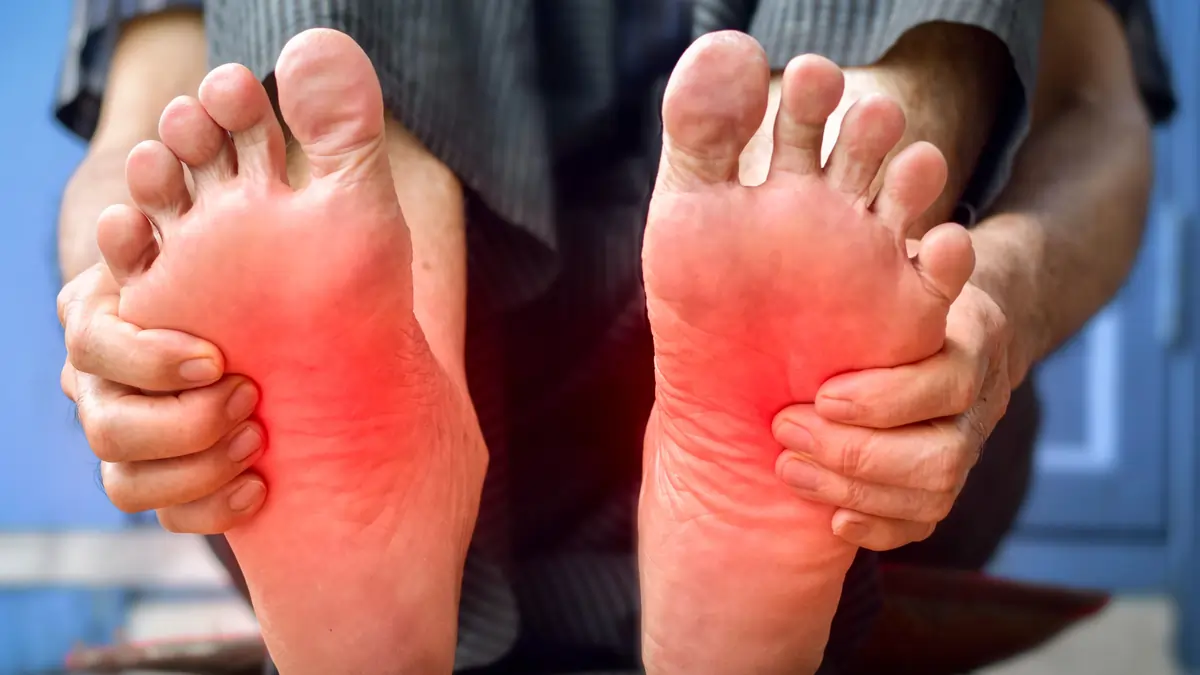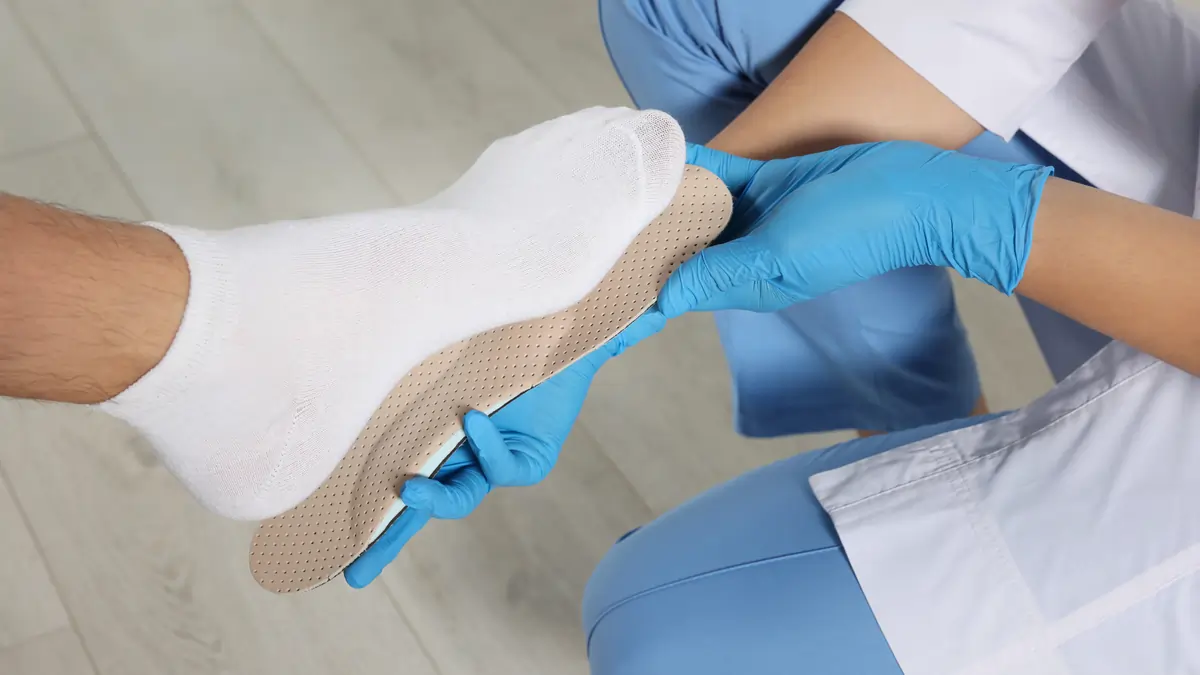
Arthritis in the feet can be a frustrating and painful condition, especially when colder weather rolls around. Many people with arthritis notice that their symptoms worsen in cold, damp conditions. But why does this happen, and what can you do to manage your arthritis pain in the feet, particularly during winter months? At KC Foot Specialists, we help patients with arthritis in the feet regularly. Read on for tips for managing pain in cold weather.
Why Does Cold Weather Make Arthritis Pain Worse?
If you have arthritis in the feet, you may already dread the cold season because it seems to intensify pain, stiffness, and swelling in your feet. Cold weather affects the joints by causing muscles to tense, which can make them stiffer and less flexible. Additionally, changes in barometric pressure can trigger inflammation in the joints, leading to more pain and discomfort.
For people with arthritis, blood circulation tends to decrease in cold weather, which can contribute to the sensation of stiffness and make it harder for inflamed joints to move freely. The drop in temperature also reduces synovial fluid, a natural lubricant in the joints. This reduction can increase friction between bones. This is why arthritis pain often feels more intense during winter.
5 Tips for Keeping Feet Pain-Free in Cold Weather
While you can’t control the weather, there are steps you can take to keep your feet as comfortable as possible when temperatures drop:
1. Wear Warm, Supportive Footwear
Invest in shoes that provide warmth and support. Look for shoes with thick insulation, a wide toe box, and proper arch support. If you’re dealing with arthritis in the toes or the ball of your foot, cushioned insoles can also help relieve pressure on painful joints.
2. Layer with Moisture-Wicking Socks
Keeping your feet dry is just as important as keeping them warm. Moisture-wicking socks can prevent the build-up of sweat, which can contribute to cold feet and exacerbate joint pain.
3. Use Heat Therapy
Applying heat to your feet can help loosen stiff joints and relax tense muscles. You can use heating pads, hot water bottles, or warm foot soaks to ease pain and improve circulation.
4. Stay Active Indoors
Regular movement is key to reducing stiffness and maintaining joint flexibility. Simple indoor exercises, like toe stretches, ankle rotations, and calf raises, can help keep your feet limber.
5. Consider Compression Socks
Compression socks can improve circulation and reduce swelling, providing relief for arthritis pain in the feet. Be sure to choose socks that fit snugly but aren’t too tight.
Exercises and Remedies for Arthritis of the Feet
In addition to keeping your feet warm, exercise and gentle stretches can be powerful tools to reduce arthritis pain and improve mobility. Here are some exercises to incorporate into your routine:
- Toe Curls: Sit comfortably and place a towel on the floor in front of you. Use your toes to scrunch the towel toward you, then release. This strengthens the muscles in your toes and feet.
- Ankle Rotations: While sitting, lift one foot slightly off the ground and rotate your ankle clockwise and counterclockwise. This helps improve flexibility and reduce stiffness.
- Calf Stretch: Stand facing a wall, place your hands on it, and step one foot back, keeping the heel on the ground. Hold for 20-30 seconds and switch sides. This stretches your calves and Achilles tendon, which can ease tension in the feet.
For additional relief, try these remedies:
- Topical creams: Anti-inflammatory creams or gels containing ingredients like capsaicin or menthol can provide temporary relief for arthritis pain.
- Epsom salt foot soaks: Soaking your feet in warm water with Epsom salts can reduce inflammation and soothe sore muscles.
- Custom orthotics: Inserts made specifically for your feet can offer additional support and alignment, reducing strain on painful joints. At KC Foot Specialists, we can fit you with custom orthotics designed to support your foot shape specifically.
Understanding Osteoarthritis Vs. Rheumatoid Arthritis in the Feet
Arthritis is not a one-size-fits-all condition. The two most common types of arthritis in the feet are osteoarthritis and rheumatoid arthritis, each with different causes and symptoms.
Osteoarthritis (OA) is a degenerative condition where the cartilage that cushions your joints wears down over time. It typically affects older adults and results from the natural wear and tear of the joints. Osteoarthritis commonly impacts the big toe joint, mid-foot, and ankle.
Rheumatoid Arthritis (RA) is an autoimmune disorder that causes the body’s immune system to attack the lining of the joints, leading to inflammation. RA often affects the smaller joints in the feet and toes and can result in deformities over time. Unlike OA, RA can strike at any age.
Treatment Options for Arthritis of the Feet
Treatment for arthritis in the feet depends on the type and severity of your condition. Common treatments include:
- Non-steroidal anti-inflammatory drugs (NSAIDs) to reduce pain and inflammation.
- Steroid injections for more severe pain and inflammation.
- Physical therapy to strengthen muscles around the joints and improve mobility.
- Custom orthotics to provide additional support.
- Surgery in extreme cases, such as joint fusion or replacement, may be necessary if conservative treatments fail to provide relief.
Can a Foot Doctor Help with Arthritis of the Feet?

Yes! A podiatrist, or foot doctor, can assess your arthritis and recommend treatment options to manage your pain and improve your quality of life. At KC Foot Specialists, we’ve helped many patients with arthritis in their feet. can Whether it’s prescribing custom orthotics, recommending physical therapy, or providing medications, Drs. Laha and Hall play a key role in arthritis care. They will monitor the progression of your condition and advise you on non-surgical and surgical options if needed.
Don’t Let the Cold Keep You Inside
Arthritis in the feet can be especially challenging in cold weather, but by taking steps to keep your feet warm and limber, you can reduce pain and discomfort. Whether you suffer from osteoarthritis or rheumatoid arthritis, working with a foot doctor can help you find effective treatments to manage your symptoms and improve your quality of life.



